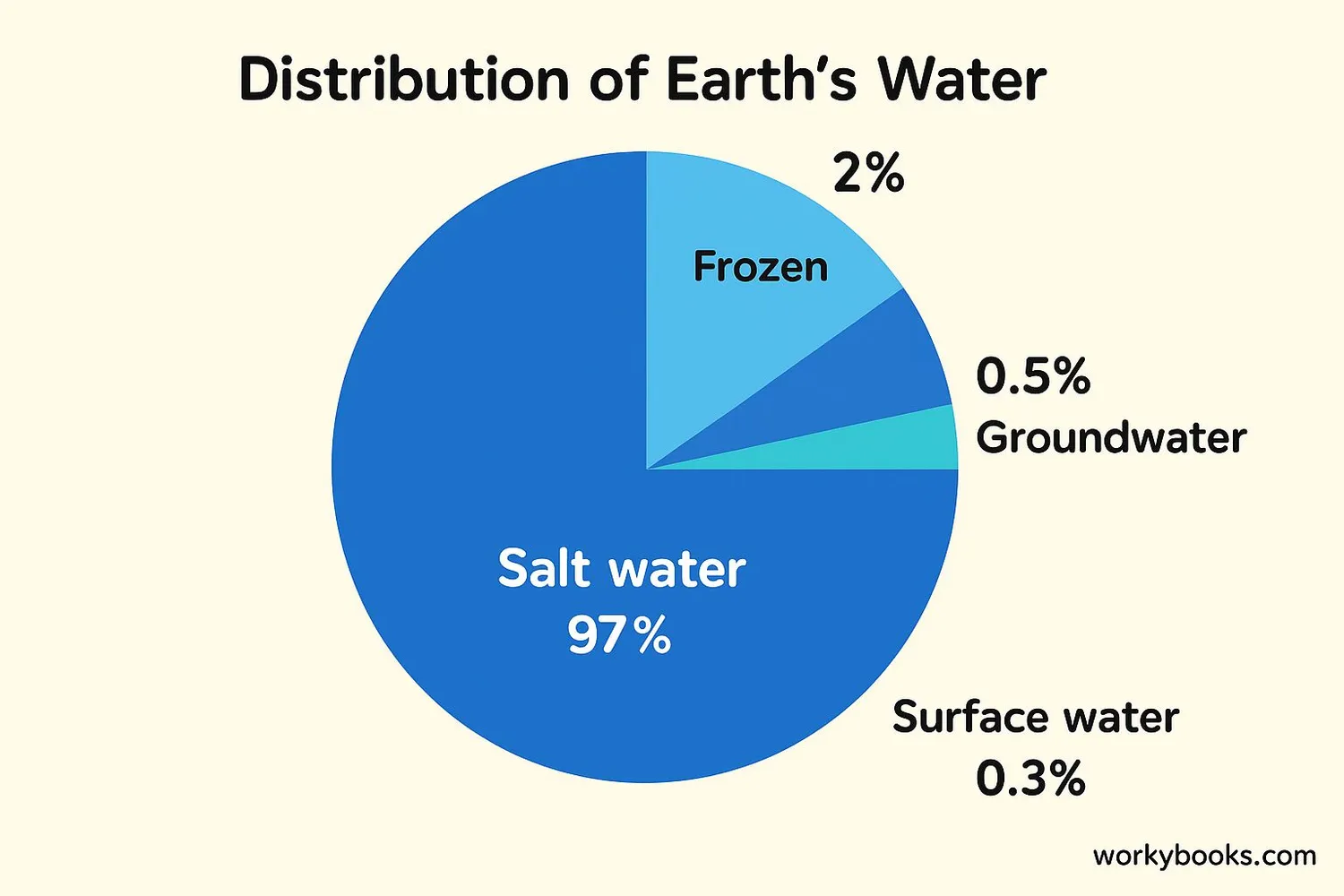The Hydrosphere - Definition, Examples, Quiz, FAQ, Trivia
Discover Earth's water systems and how they sustain life!
What is the Hydrosphere?

The hydrosphere is all the water on Earth! It includes:
Oceans (like the Pacific and Atlantic)
Rivers (like the Amazon and Nile)
Lakes (like the Great Lakes and Lake Victoria)
Glaciers (like in Antarctica and Greenland)
Groundwater (water underground)
Clouds and water vapor in the air
Water is constantly moving between these different forms in a process called the water cycle. About 71% of Earth's surface is covered by water, which is why Earth is called the "Blue Planet"!
Water Fact!
If all the water on Earth was collected into a sphere, it would be about 860 miles (1,385 km) in diameter - that's wider than the distance from New York to Chicago!
The Water Cycle

The water cycle is Earth's natural recycling system! Water moves continuously between the atmosphere, land, and oceans through these processes:
Evaporation
Sun heats water, turning it into vapor that rises
Condensation
Water vapor cools and forms clouds
Precipitation
Water falls as rain, snow, sleet or hail
Collection
Water gathers in oceans, lakes, rivers, and soil
Runoff
Water flows over land back to water bodies
This cycle has been happening for billions of years! The water you drink today could have been part of a dinosaur's bath millions of years ago. The total amount of water on Earth remains constant - it just keeps changing forms and locations.
Cycle Speed!
A water molecule spends about 9 days in the atmosphere before falling as precipitation. But it might stay in the ocean for thousands of years!
Water Distribution on Earth

Earth has about 1.386 billion cubic kilometers of water. But not all water is accessible or drinkable! Here's how Earth's water is distributed:
This means that less than 1% of Earth's water is freshwater that's easily accessible for human use! Most freshwater is locked in glaciers and ice caps, with only a tiny fraction in lakes, rivers, and underground sources that we can use.
Conservation Fact!
An average American uses about 80-100 gallons of water per day. Turning off the tap while brushing teeth can save 8 gallons per day!
Why the Hydrosphere is Important

Water is essential for all living things! Here's why the hydrosphere is so important:
Supports Life
All living organisms need water to survive and grow
Regulates Climate
Oceans absorb heat and distribute it around the planet
Nutrient Transport
Water carries nutrients to plants and through ecosystems
The hydrosphere also:
• Shapes Earth's surface through erosion and deposition
• Provides habitats for countless aquatic species
• Enables agriculture that feeds the world
• Generates hydroelectric power
• Supports transportation and commerce
Without the hydrosphere, Earth would be a lifeless planet like Mars. Protecting our water resources is essential for all life on Earth!
Hydrosphere Quiz
Test your knowledge about Earth's hydrosphere with this quiz! Answer all 5 questions to see how much you've learned.
Frequently Asked Questions
Here are answers to common questions about Earth's hydrosphere:
Water Trivia
Discover amazing facts about Earth's hydrosphere!
Water on Other Planets
Scientists have found evidence of water on Mars, Jupiter's moon Europa, and Saturn's moon Enceladus. Europa may have twice as much water as all of Earth's oceans combined!
Ocean Currents
The world's largest ocean current is the Antarctic Circumpolar Current. It moves 100 times more water than all the world's rivers combined and flows nonstop around Antarctica!
Deep Sea Creatures
The Mariana snailfish lives nearly 5 miles (8 km) below the ocean surface. At this depth, the pressure is 1,000 times greater than at sea level - equivalent to 50 jumbo jets stacked on you!
Water Footprint
It takes about 39,000 gallons of water to manufacture a new car. A hamburger requires 660 gallons of water (mostly to grow feed for cattle). Being mindful of what we consume helps conserve water!


